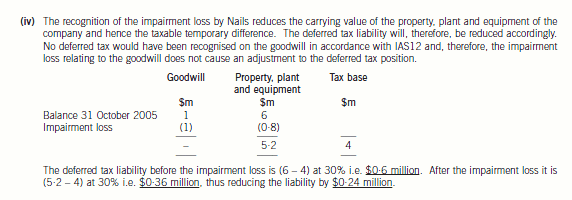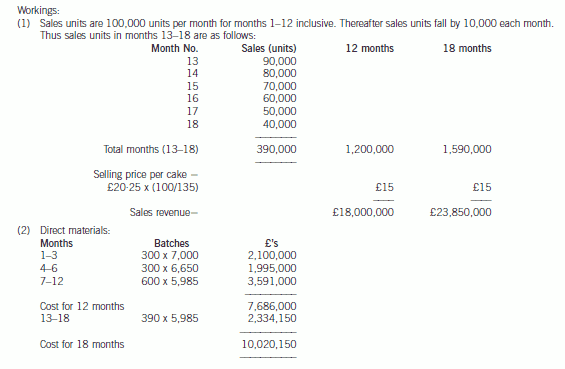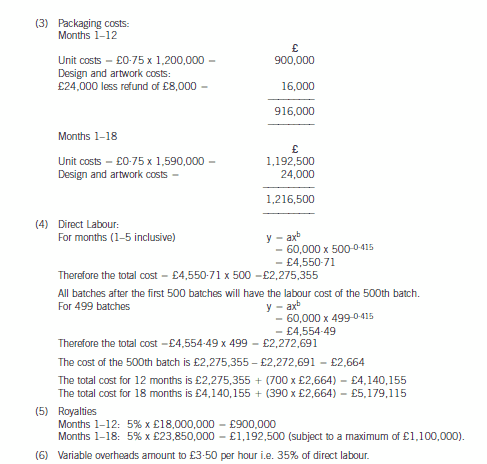不留遗憾!2020年ACCA下半年报考时间安排
发布时间:2020-04-15
想知道关于ACCA考试下半年报考的时间点有哪些安排吗?同时给大家参考一下具体的流程,考生们跟着51题库考试学习网一起来看一下吧,这里有详细的说明哦!
关于ACCA年度考试时间安排
|
考试月份 |
考试具体时间 |
|
2020年3月 |
2020年3月:2日、3日、4日、5日、6日 |
|
2020年6月 |
2020年6月:1日、2日、3日、4日、5日 |
|
2020年9月 |
2020年9月:7日、8日、9日、10日、11日 |
|
2020年12月 |
2020年12月:7日、8日、9日、10日、11日 |
关于ACCA考试注册报名流程
1、准备注册所需材料
2、在全球官方网站进行注册
(1)在线上传注册资料扫描文件
(2)采用纸质材料将注册资料递交ACCA代表处
3、支付注册费用
采用在线上传资料方式的必须在线支付
4、查询注册进度
(1)线上完成全部注册的约2周
(2)纸质注册约6周
在校学生所需准备的注册材料:
中英文在校证明(原件必须为彩色扫描件)
中英文成绩单(均需为加盖所在学校或学校教务部门公章的彩色扫描件)
中英文个人身份证件或护照(原件必须为彩色扫描件、英文件必须为加盖所在学校或学校教务部门公章的彩色扫描件)
2寸彩色护照用证件照一张
用于支付注册费用的国际双币信用卡或国际汇票(推荐使用Visa)
非在校学生所需准备的注册资料(符合学历要求):
中英文个人身份证件或护照(原件必须为彩色扫描件、英文件必须为加盖翻译公司翻译专用章的彩色扫描件)
中英文学历证明(原件必须为彩色扫描件、英文件必须为加盖翻译公司翻译专用章的彩色扫描件*MPAcc专业,需提供中英文成绩单*国外学历均需提供成绩单)
2寸彩色护照用证件照一张 用于支付注册费用的国际双币信用卡或国际汇票(推荐使用Visa)
非在校学生所需准备的注册资料(不符合学历要求-FIA形式):
中英文个人身份证件或护照(原件必须为彩色扫描件、英文件必须为加盖翻译公司翻译专用章或者学校教务部门公章的彩色扫描件)
2寸彩色护照用证件照一张
用于支付注册费用的国际双币信用卡或国际汇票(推荐使用Visa)
好了,以上就是有关于ACCA考试的全部内容。如果想要了解更多的考试信息,考友们可以关注51题库考试学习网哦!感谢各位的支持与信任,最后衷心祝愿考生们能取得理想成绩!
下面小编为大家准备了 ACCA考试 的相关考题,供大家学习参考。
4 (a) The purpose of ISA 510 ‘Initial Engagements – Opening Balances’ is to establish standards and provide guidance
regarding opening balances when the financial statements are audited for the first time or when the financial
statements for the prior period were audited by another auditor.
Required:
Explain the auditor’s reporting responsibilities that are specific to initial engagements. (5 marks)
4 JOHNSTON CO
(a) Reporting responsibilities specific to initial engagements
For initial audit engagements, the auditor should obtain sufficient appropriate audit evidence that:
■ the opening balances do not contain misstatements that materially affect the current period’s financial statements;
■ the prior period’s closing balances have been correctly brought forward to the current period (or, where appropriate, have
been restated); and
■ appropriate accounting policies are consistently applied or changes in accounting policies have been properly accounted
for (and adequately presented and disclosed).
If the auditor is unable to obtain sufficient appropriate audit evidence concerning opening balances there will be a limitation
on the scope of the audit. The auditor’s report should include:
■ a qualified (‘except for’) opinion;
■ a disclaimer of opinion; or
■ in those jurisdictions where it is permitted, an opinion which is:
– qualified (or disclaimed) regarding the results of operations (i.e. on the income statement); and
– unqualified regarding financial position (i.e. on the balance sheet).
If the effect of a misstatement in the opening balances is not properly accounted for and adequately presented and disclosed,
the auditor should express a qualified (‘except for’ disagreement) opinion or an adverse opinion, as appropriate.
If the current period’s accounting policies have not been consistently applied in relation to opening balances and if the change
has not been properly accounted for and adequately presented and disclosed, the auditor should similarly express
disagreement (‘except for’ or adverse opinion as appropriate).
However, if a modification regarding the prior period’s financial statements remains relevant and material to the current
period’s financial statements, the auditor should modify the current auditor’s report accordingly.
Additionally the directors wish to know how the provision for deferred taxation would be calculated in the following
situations under IAS12 ‘Income Taxes’:
(i) On 1 November 2003, the company had granted ten million share options worth $40 million subject to a two
year vesting period. Local tax law allows a tax deduction at the exercise date of the intrinsic value of the options.
The intrinsic value of the ten million share options at 31 October 2004 was $16 million and at 31 October 2005
was $46 million. The increase in the share price in the year to 31 October 2005 could not be foreseen at
31 October 2004. The options were exercised at 31 October 2005. The directors are unsure how to account
for deferred taxation on this transaction for the years ended 31 October 2004 and 31 October 2005.
(ii) Panel is leasing plant under a finance lease over a five year period. The asset was recorded at the present value
of the minimum lease payments of $12 million at the inception of the lease which was 1 November 2004. The
asset is depreciated on a straight line basis over the five years and has no residual value. The annual lease
payments are $3 million payable in arrears on 31 October and the effective interest rate is 8% per annum. The
directors have not leased an asset under a finance lease before and are unsure as to its treatment for deferred
taxation. The company can claim a tax deduction for the annual rental payment as the finance lease does not
qualify for tax relief.
(iii) A wholly owned overseas subsidiary, Pins, a limited liability company, sold goods costing $7 million to Panel on
1 September 2005, and these goods had not been sold by Panel before the year end. Panel had paid $9 million
for these goods. The directors do not understand how this transaction should be dealt with in the financial
statements of the subsidiary and the group for taxation purposes. Pins pays tax locally at 30%.
(iv) Nails, a limited liability company, is a wholly owned subsidiary of Panel, and is a cash generating unit in its own
right. The value of the property, plant and equipment of Nails at 31 October 2005 was $6 million and purchased
goodwill was $1 million before any impairment loss. The company had no other assets or liabilities. An
impairment loss of $1·8 million had occurred at 31 October 2005. The tax base of the property, plant and
equipment of Nails was $4 million as at 31 October 2005. The directors wish to know how the impairment loss
will affect the deferred tax provision for the year. Impairment losses are not an allowable expense for taxation
purposes.
Assume a tax rate of 30%.
Required:
(b) Discuss, with suitable computations, how the situations (i) to (iv) above will impact on the accounting for
deferred tax under IAS12 ‘Income Taxes’ in the group financial statements of Panel. (16 marks)
(The situations in (i) to (iv) above carry equal marks)
(b) (i) The tax deduction is based on the option’s intrinsic value which is the difference between the market price and exercise
price of the share option. It is likely that a deferred tax asset will arise which represents the difference between the tax
base of the employee’s service received to date and the carrying amount which will effectively normally be zero.
The recognition of the deferred tax asset should be dealt with on the following basis:
(a) if the estimated or actual tax deduction is less than or equal to the cumulative recognised expense then the
associated tax benefits are recognised in the income statement
(b) if the estimated or actual tax deduction exceeds the cumulative recognised compensation expense then the excess
tax benefits are recognised directly in a separate component of equity.
As regards the tax effects of the share options, in the year to 31 October 2004, the tax effect of the remuneration expensewill be in excess of the tax benefit.

The company will have to estimate the amount of the tax benefit as it is based on the share price at 31 October 2005.
The information available at 31 October 2004 indicates a tax benefit based on an intrinsic value of $16 million.
As a result, the tax benefit of $2·4 million will be recognised within the deferred tax provision. At 31 October 2005,
the options have been exercised. Tax receivable will be 30% x $46 million i.e. $13·8 million. The deferred tax asset
of $2·4 million is no longer recognised as the tax benefit has crystallised at the date when the options were exercised.
For a tax benefit to be recognised in the year to 31 October 2004, the provisions of IAS12 should be complied with as
regards the recognition of a deferred tax asset.
(ii) Plant acquired under a finance lease will be recorded as property, plant and equipment and a corresponding liability for
the obligation to pay future rentals. Rents payable are apportioned between the finance charge and a reduction of the
outstanding obligation. A temporary difference will effectively arise between the value of the plant for accounting
purposes and the equivalent of the outstanding obligation as the annual rental payments qualify for tax relief. The tax
base of the asset is the amount deductible for tax in future which is zero. The tax base of the liability is the carrying
amount less any future tax deductible amounts which will give a tax base of zero. Thus the net temporary differencewill be:

(iii) The subsidiary, Pins, has made a profit of $2 million on the transaction with Panel. These goods are held in inventory
at the year end and a consolidation adjustment of an equivalent amount will be made against profit and inventory. Pins
will have provided for the tax on this profit as part of its current tax liability. This tax will need to be eliminated at the
group level and this will be done by recognising a deferred tax asset of $2 million x 30%, i.e. $600,000. Thus any
consolidation adjustments that have the effect of deferring or accelerating tax when viewed from a group perspective will
be accounted for as part of the deferred tax provision. Group profit will be different to the sum of the profits of the
individual group companies. Tax is normally payable on the profits of the individual companies. Thus there is a need
to account for this temporary difference. IAS12 does not specifically address the issue of which tax rate should be used
calculate the deferred tax provision. IAS12 does generally say that regard should be had to the expected recovery or
settlement of the tax. This would be generally consistent with using the rate applicable to the transferee company (Panel)
rather than the transferor (Pins).
1 The Great Western Cake Company (GWCC) is a well-established manufacturer of specialist flour confectionery
products, including cakes. GWCC sells its products to national supermarket chains. The company’s success during
recent years is largely attributable to its ability to develop innovative products which appeal to the food selectors within
national supermarket chains.
The marketing department of Superstores plc, a national supermarket chain has asked GWCC to manufacture a cake
known as the ‘Mighty Ben’. Mighty Ben is a character who has recently appeared in a film which was broadcast
around the world. The cake is expected to have a minimum market life of one year although the marketing department
consider that this might extend to eighteen months.
The management accountant of GWCC has collated the following estimated information in respect of the Mighty Ben
cake:
(1) Superstores plc has decided on a launch price of £20·25 for the Mighty Ben cake and it is expected that this
price will be maintained for the duration of the product’s life. Superstores plc will apply a 35% mark-up on the
purchase price of each cake from GWCC.
(2) Sales of the Mighty Ben cake are expected to be 100,000 units per month during the first twelve months.
Thereafter sales of the Mighty Ben cake are expected to decrease by 10,000 units in each subsequent month.
(3) Due to the relatively short shelf-life of the Mighty Ben cake, management has decided to manufacture the cakes
on a ‘just-in-time’ basis for delivery in accordance with agreed schedules. The cakes will be manufactured in
batches of 1,000. Direct materials input into the baking process will cost £7,000 per batch for each of the first
three months’ production. The material cost of the next three months’ production is expected to be 95% of the
cost of the first three months’ production. All batches manufactured thereafter will cost 90% of the cost of the
second three months’ production.
(4) Packaging costs will amount to £0·75 per cake. The original costs of the artwork and design of the packaging
will amount to £24,000. Superstores plc will reimburse GWCC £8,000 in the event that the product is
withdrawn from sale after twelve months.
(5) The design of the Mighty Ben cake is such that it is required to be hand-finished. A 75% learning curve will
apply to the total labour time requirement until the end of month five. Thereafter a steady state will apply with
labour time required per batch stabilising at that of the final batch in month five. The labour requirement for the
first batch of Mighty Ben cakes to be manufactured is expected to be 6,000 hours at £10 per hour.
(6) A royalty of 5% of sales revenue (subject to a maximum royalty of £1·1 million) will be payable by GWCC to the
owners of the Mighty Ben copyright.
(7) Variable overheads are estimated at £3·50 per direct labour hour.
(8) The manufacture of the Mighty Ben cake will increase fixed overheads by £75,000 per month.
(9) In order to provide a production facility dedicated to the Mighty Ben cake, an investment of £1,900,000 will be
required and this will be fully depreciated over twelve months.
(10) The directors of GWCC require an average annual return of 35% on their investment over 12 months and
18 months.
(11) Ignore taxation and the present value of cash flows.
Note: Learning curve formula:
y = axb
where y = average cost per batch
a = the cost of the initial batch
x = the total number of batches
b = learning index (= –0·415 for 75% learning rate)
Required:
(a) Prepare detailed calculations to show whether the manufacture of Mighty Ben cakes will provide the required
rate of return for GWCC over periods of twelve months and eighteen months. (20 marks)



声明:本文内容由互联网用户自发贡献自行上传,本网站不拥有所有权,未作人工编辑处理,也不承担相关法律责任。如果您发现有涉嫌版权的内容,欢迎发送邮件至:contact@51tk.com 进行举报,并提供相关证据,工作人员会在5个工作日内联系你,一经查实,本站将立刻删除涉嫌侵权内容。
- 2020-03-07
- 2020-01-10
- 2020-01-10
- 2020-01-09
- 2020-03-01
- 2020-03-14
- 2020-03-27
- 2020-08-16
- 2020-05-20
- 2020-04-16
- 2020-05-15
- 2020-01-10
- 2020-04-14
- 2020-04-16
- 2020-05-10
- 2020-03-17
- 2020-01-09
- 2020-01-09
- 2020-01-09
- 2020-05-05
- 2020-01-10
- 2020-01-10
- 2020-03-08
- 2020-01-10
- 2020-04-30
- 2020-01-10
- 2020-05-20
- 2020-03-29
- 2020-01-10
- 2020-01-10